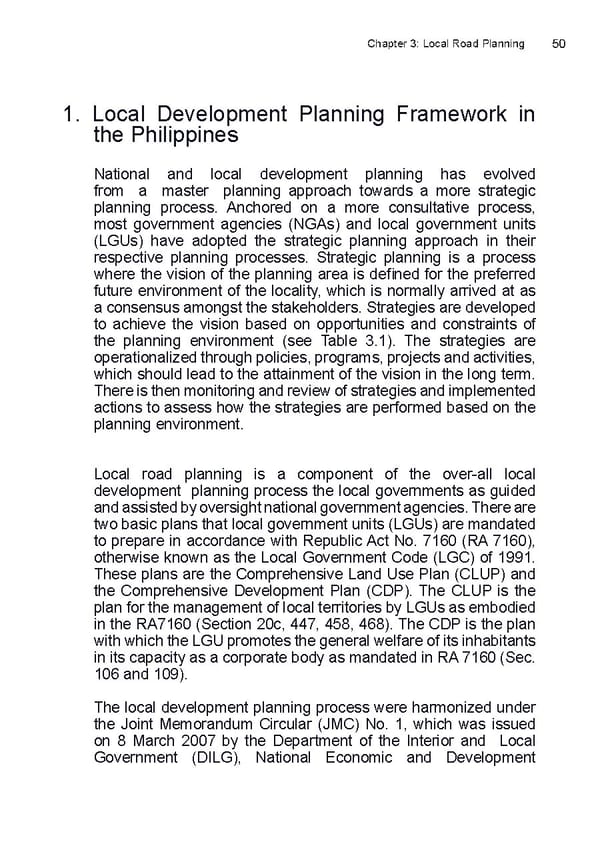Chapter 3: Local Road Planning 50 1. Local Development Planning Framework in the Philippines National and local development planning has evolved from a master planning approach towards a more strategic planning process. Anchored on a more consultative process, most government agencies (NGAs) and local government units (LGUs) have adopted the strategic planning approach in their respective planning processes. Strategic planning is a process where the vision of the planning area is deifned for the preferred future environment of the locality, which is normally arrived at as a consensus amongst the stakeholders. Strategies are developed to achieve the vision based on opportunities and constraints of the planning environment (see Table 3.1). The strategies are operationalized through policies, programs, projects and activities, which should lead to the attainment of the vision in the long term. There is then monitoring and review of strategies and implemented actions to assess how the strategies are performed based on the planning environment. Local road planning is a component of the over-all local development planning process the local governments as guided and assisted by oversight national government agencies. There are two basic plans that local government units (LGUs) are mandated to prepare in accordance with Republic Act No. 7160 (RA 7160), otherwise known as the Local Government Code (LGC) of 1991. These plans are the Comprehensive Land Use Plan (CLUP) and the Comprehensive Development Plan (CDP). The CLUP is the plan for the management of local territories by LGUs as embodied in the RA7160 (Section 20c, 447, 458, 468). The CDP is the plan with which the LGU promotes the general welfare of its inhabitants in its capacity as a corporate body as mandated in RA 7160 (Sec. 106 and 109). The local development planning process were harmonized under the Joint Memorandum Circular (JMC) No. 1, which was issued on 8 March 2007 by the Department of the Interior and Local Government (DILG), National Economic and Development
 LRM Manual CMGP Page 49 Page 51
LRM Manual CMGP Page 49 Page 51